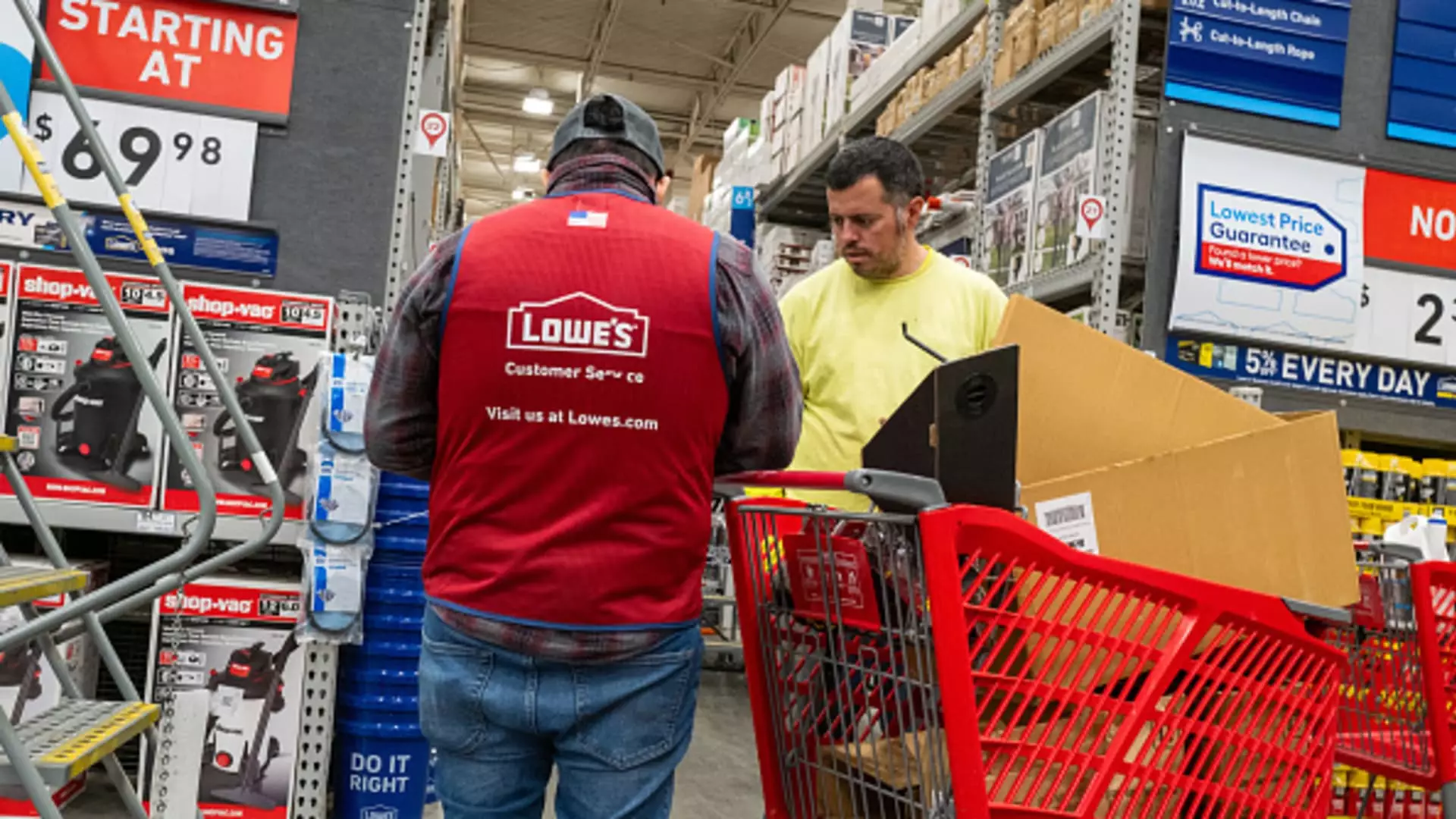Lowe’s recently announced a cut in its full-year forecast, citing a decline in quarterly sales and projecting weak home improvement spending in the second half of the year. The company now expects total sales to range between $82.7 billion and $83.2 billion for the full year, a decrease from the $84 billion to $85 billion that was previously anticipated. Additionally, the company stated that it anticipates a comparable sales decline of 3.5% to 4%, compared to its prior forecast of a 2% to 3% decrease.
CEO Marvin Ellison highlighted that consumers are waiting for the Federal Reserve to cut interest rates, leading them to delay big-ticket purchases and major home projects. With about 90% of Lowe’s customers being homeowners, many of whom have fixed 30-year mortgage rates below 4%, there is hesitance to take out loans for projects with higher interest rates. This reluctance to invest in home improvement projects is further compounded by high inflation and economic uncertainty, contributing to a decline in sales for the company.
In the fiscal second quarter, Lowe’s reported a net income decline, with earnings per share coming in at $4.17 against Wall Street’s expectation of $3.97. The company’s revenue of $23.59 billion fell short of the anticipated $23.91 billion. Despite a pretax gain from the sale of its Canadian retail business, which boosted earnings per share, Lowe’s experienced a drop in net sales compared to the previous year.
Lowe’s, along with its rival Home Depot, is facing challenges in a tough retail environment marked by higher mortgage rates and borrowing costs. Home Depot recently surpassed Wall Street’s earnings and revenue estimates but expressed concerns about the back half of the year due to consumer hesitation in undertaking projects. Factors such as increased uncertainty in the economy and deferred spending are contributing to a subdued outlook for both home improvement retailers.
Despite the current challenges, CEO Marvin Ellison remains optimistic about the medium and long-term outlook for the home improvement industry. He highlighted trends such as the aging U.S. housing stock, millennials forming households, and Baby Boomers opting to renovate their homes instead of moving. These factors are expected to drive growth in the segment once consumer sentiment improves and spending picks up.
Lowe’s closed Monday at $243.21 per share, with its stock up approximately 9% year to date. While the company’s performance has trailed behind the S&P 500’s gains, Ellison believes that Lowe’s is well-positioned to capture market share once there is an uptick in home improvement activity. With a focus on customer needs and market trends, Lowe’s aims to navigate the current challenges and emerge stronger in the competitive retail landscape.

